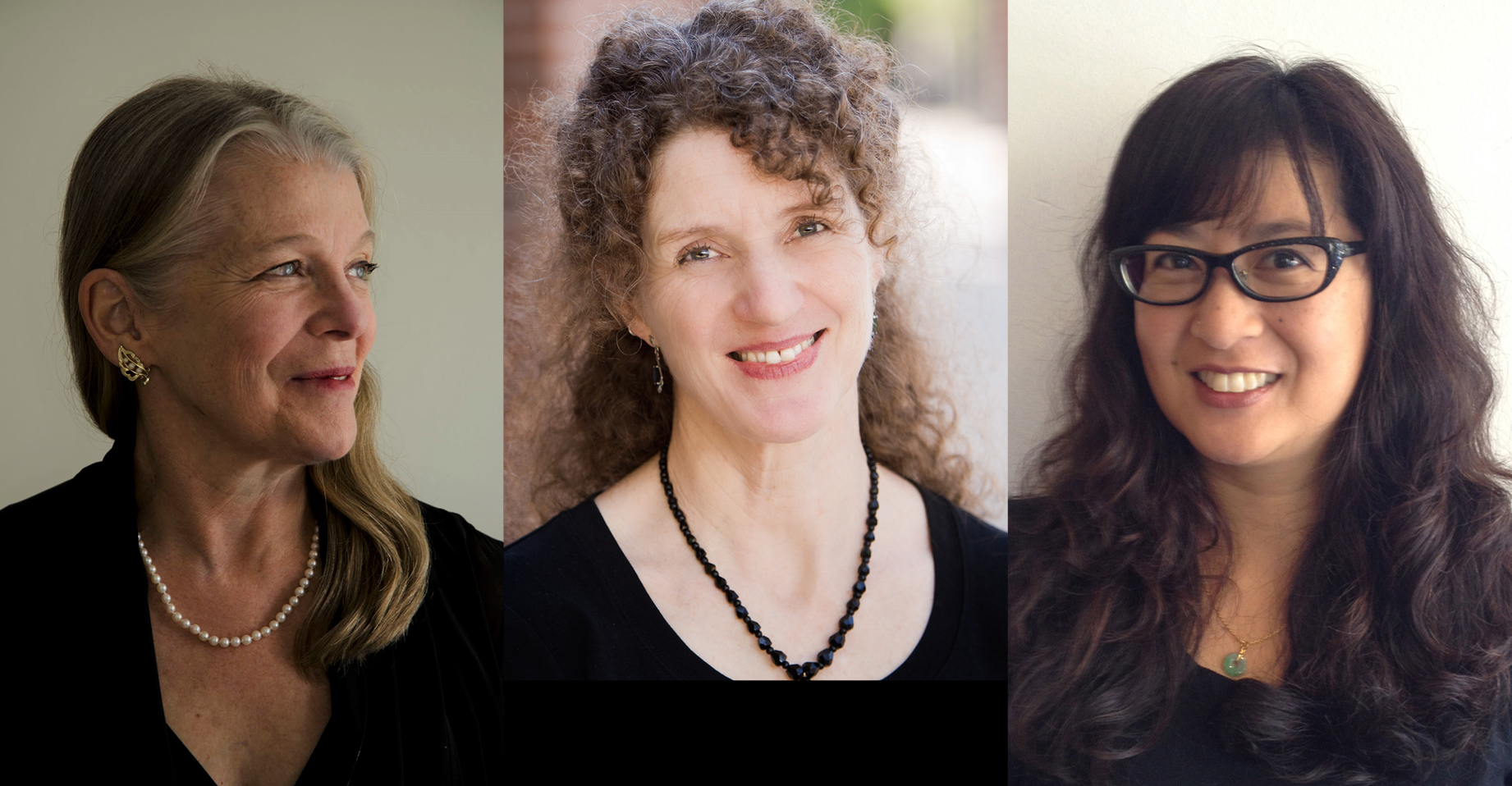
Understanding dance history can help students bring greater context, meaning and appreciation for the artform. Even Misty Copeland, the first African American female principal dancer with the American Ballet Theatre, once said: “I say over and over again that I am just standing on the shoulders of so many who have set this path for me.”
In honor of Women’s History Month, Dance Teacher spoke with three women about the unique ways they are shaping dance education through history.
April Masten, associate professor of history at Stony Brook University and recipient of the 2021 Eugene Asher Distinguished Teaching Award
You have managed to merge history and dance together through your course, Dancing Through American History. Why do you think it’s instrumental to learn about history through the lens of dance?
I don’t believe that there should be a disconnect between the body and the mind, so I started to think about how I could incorporate dance into my history classes. I fell in love with social history, which is the history of ordinary people. How do you get at ordinary people’s history? One way is through their culture. I thought about dance as a good way to learn this. So, I tried a class where I taught eight different dances.
I thought of an event that happened in history, like the slave trade, for example, or the rise of the middle class in the 1800s, and taught a dance that those people would have done during that time. For instance, when I taught the early period of the slave trade, I did a ring shout and taught the students how to shuffle and sing the different spiritual songs Africans did during that time. They also read from the materials of the period.
When I taught the rise of the middle class in the 1840s, for instance, my students read about the economy, and I also had them learn to waltz and understand the etiquette of being a middle-class person back then.
My students soon began to realize that there are things you don’t notice unless you dance. For instance, with tap dancing, people often talk about how it is a mélange of English, Irish and African American dances. It makes one ask: “When were those people meeting each other?” That led my students and I to start looking into the cities, taverns and stages of the time to find out where those people were meeting.
What impact do you think teaching dance history will have on the future of dance education as a whole?
An artisan used to be considered an artist that had all the skills and secrets of their trade. They produced everything from shovels to clothing. Industrialization divided up how a product was made into tasks done by unskilled people, and once we brought machinery in, we started to divide the mind from the body. We began to think that somehow the body is inferior to the mind.
What I am trying to do with teaching history through dance is to reconnect the mind and body. Your body teaches things to your brain. We should unify them so that we can become a whole person again.
Do you have any advice for dance teachers on how they can integrate more dance history into their classes?
The thing about dance and history is that every period in which you dance, something has a different meaning. For example, when we do the Charleston today, it’s not the same as when it was done at the turn of the century. It has a different meaning depending on its historical context. So, for a dance instructor to teach particular steps, it would be best to keep in mind why we still do it today and why it’s important to us. What can its history teach us about the meaning that we give to it today and the form that it takes?
Dance is like any other form of culture. It changes over time and if it seems like it is staying the same, we need to look at why that’s the case and in whose interest it is to keep it the way it was.
Yutian Wong, professor of Critical Dance Studies at San Francisco State University and author of Choreographing Asian America (Wesleyan University Press, 2010); editor of Contemporary Directions in Asian American Dance (University of Wisconsin Press, 2016)
Why do you think it is important for students to study dance history?
I teach at a university, so if you are majoring in dance at a university, I think there should be a basic expectation that you understand the practice that you are studying in order to be able to talk about it— where it comes from, what it is—and make good decisions knowing how it fits with what’s already been done before.
What impact do you hope your books will have on the dance education landscape?
One of my goals in writing my book Choreographing Asian America was to establish Asian American dance studies as a field. I wrote about orientalism in modern dance in particular. The book itself is an ethnography of a Vietnamese American performance ensemble, Club O’Noodles. I co-edited a second book, Contemporary Directions in Asian American Dance. Because of that book, “Asian American dance” is a searchable keyword now at the New York Public Library Dance Collection. That was just one of my main career goals—so that others had resources to go to.
Do you have any advice for women of color who are pursuing careers as dance scholars or authors like yourself?
When I started my career, the field of dance studies was very new and small. I did my graduate degree at the University of California, Riverside. That was the first department to offer a PhD in dance studies, and I was part of a cohort of some of the first dance scholars who actually earned a PhD in dance history and theory. My advice would be to read widely across different fields and to write a lot.
Kathy Hassinger, artistic director of Dance Currents Inc. and creator of the documentary To Feel the Earth and Touch the Sky: Living the Legacy of American Modern Dance
What inspired you to create this film celebrating the stories of some of the greatest modern-dance choreographers, from Isadora Duncan and Martha Graham to Alvin Ailey and Robert Battle?
It has taken me 12 years to make the movie. I was first gathering some pieces from my studies that spanned 100 years, from about 1903 to 2003. Dance Currents would present these pieces as a lecture-demonstration or as a full concert with a panel discussion afterwards. At one point, I decided to get a record of all of these dances, so one of my friends who is a filmmaker was able to film us performing them. Then I started to think about people in Boston [near Newton, Massachusetts, where Dance Currents is based] who are choreographers, teachers and former dancers who have studied with some of these great artists, and I started interviewing some of them.
Later, when I was teaching Perspectives in World Dance at Emerson College, we sadly only had one classroom day devoted to learning about modern dance. It was like trying to throw the kids the kitchen sink! Eventually, I realized what was helpful was creating a “family tree” to outline the generations of modern dance. That helped the students a lot, so I incorporated that family tree into the film.
What impact do you hope the documentary will have on dance education?
One big wish I have is that the wonderful technique developed by icons like Martha Graham, Doris Humphrey, José Limón and Merce Cunningham will come back into the public area. I know you can learn these techniques in New York, but it’s about the only place where you can get lessons in a public place that’s not through a university. I wish some of those techniques will be taught more throughout the country. I think that helps people understand dance history a lot better.
As dance tries to evolve and appeal to today’s culture and audiences, why do you think it becomes more imperative that we preserve and learn about dance history?
By studying dance history, students know they are part of a larger tradition. They are able to learn about diverse cultures and develop a shared humanity—understanding the building blocks of their art and how people have put these together in different ways. Dance history can help them better appreciate how the present builds on the past and the dialogue between the past and the present. It helps dancers understand the roots, context and culture of dance and thereby give it more meaning. I think it’s important to learn historical dances for this very reason.
Nothing springs forth brand-new, and by learning works by Isadora Duncan and Ruth St. Denis you can understand the roots of Doris Humphrey’s “fall and recovery” and Martha Graham’s “contraction and release.” Often, the world is understood through art, so learning about dance history allows one to understand the world around them and thus find their own voice.





